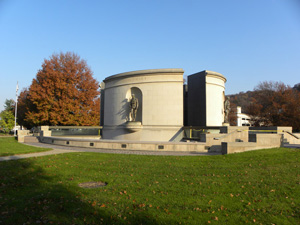

Remember...
James Edward Marlier
1920-1944
"Being such an amiable young man, Mr. Marlier enjoyed the friendship of all who knew him."
:Follansbee Review, December 6, 1945
 |
Remember...James Edward Marlier
|
James entered into service with the U.S. Army during World War II as a research technician in July of 1943, at Aberdeen Proving Grounds, where he remained. Aberdeen Proving Grounds, established in 1917 for World War I, was the site of important research in armaments in World War II, and the site remains in use today. Innovative weapons were developed and tested on these grounds, immensely advancing technologies used within the Army. ("History of APG," Army Alliance: Aberdeen Proving Grounds, accessed 2 April 2018, http://armyalliance.org/about-apg/history-of-apg/.)
Two years after Marlier's assignment to Aberdeen Proving Grounds, on December 4, 1945, Marlier died suddenly of acute myocarditis. His body wasn't found until two days later, due to his living in an apartment removed from the Aberdeen barracks. His funeral was held on December 8, and he was buried at Oak Grove Cemetery in Follansbee.
Article prepared by Piper Martin and Jenna Kahwash, George Washington High School Advanced Placement U.S. History
March 2018

West Virginia Archives and History welcomes any additional information that can be provided about these veterans, including photographs, family names, letters and other relevant personal history.